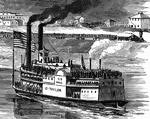Clipart tagged: ‘bellaire’

Bellaire
"Bellaire, O.- Steamboats conveying troops and munitions of war for the Federal forces on the Great…

Bellaire
"Bellaire, O.- Steamboats conveying troops and munitions of war for the Federal forces on the Great…

Bellaire, Ohio
"Bellaire, O.- Steamboats conveying troops and munitions of war for the Federal forces on the Great…

Bellaire
"Bellaire, O.- Steamboats conveying troops and munitions of war for the Federal forces on the Great…

General David Hunter
"General Hunter, born in Washington, D. C., July 21st, 1802, died there, February 2nd, 1886, was graduated…